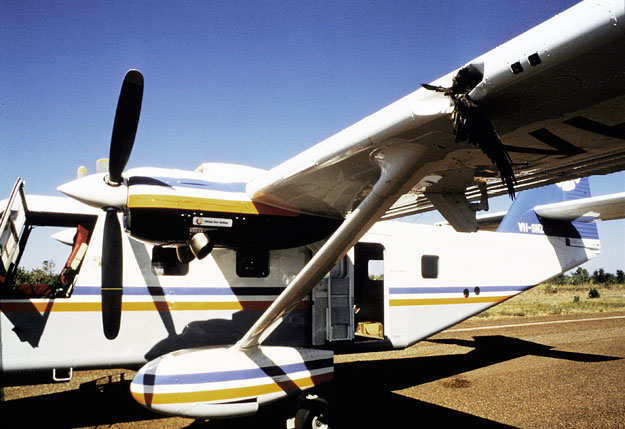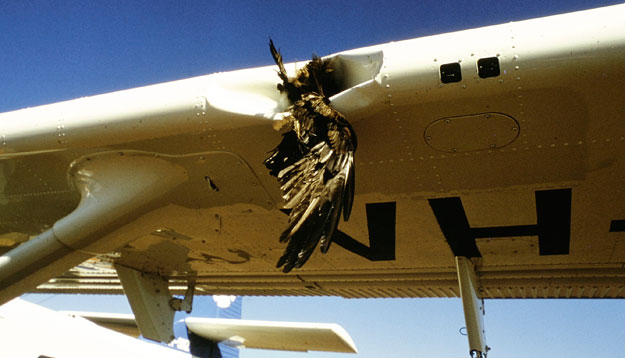
Birds have always been a hazard to aviators, though some would maintain that it is the aviator that is invading the birds' domain! Nevertheless, birdstrikes remain a major safety concern.
The damage from a birdstrike can be relatively minor, as this impact with a hawk by GAF N22 Nomad VH-SNZ illustrates. This aircraft actually suffered two birdstrikes in the space of a couple of years: the first at Kununurra, WA, on 1 July 1981; and the other near Darwin, NT, on 29 June 1983 whilst the aircraft was cruising at 1,000 feet on coastal surveillance.
Fortunately in the pictured case, probably the 1981 strike, although the wing leading edge has been damaged, the bird does not appear to have damaged the main wing spar. However, a similar impact on the pilot's windscreen could have been fatal, or at least resulted in severe injury to the pilot.
Birdstrikes can also bring down large aircraft, as the well-known ditching of Airbus A320 N106US, US Airways flight 1549, in New York's Hudson River on 15 January 2009 shows.

Because of the serious safety problem posed by birds, for many years the Department maintained a Bird Hazard Identification Unit, one of whose scientists is seen below examining feathers from a bird killed by an aircraft. The job of the BHIU was to identify the species of birds involved in birdstrikes and to research methods of bird control.
Major airports are also required to have wildlife control plans as part of their certification procedures. According to a 2008 report by the ATSB, two thirds of all wildlife strikes occur during take off or landing phases of flight. CASA reports that there are about 1,000 birdstrikes alone in Australia each year as of 2011.

Incidentally, birds are not the only wildlife that pose a threat to aircraft. In some places, 'batstrikes' - impacts with flying foxes - are just as or more prevalent. Kangaroos, too, present a hazard to aircraft landing and taking off at many country aerodromes.
(Photos: CAHS collection)
Back to the main Air Safety & Accidents index
Back to the main Airports & Aerodromes index
If this page appears without a menu bar at top and left, click here